Carl E. Olson's Blog, page 193
September 27, 2012
Preparing for the Month of the Rosary and Celebrating the Feast of St. Thérèse of Lisieux
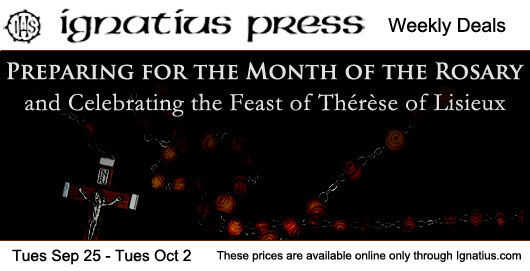
Preparing for the Month of the Rosary and Celebrating the Feast of St. Thérèse of Lisieux
Offer ends Tuesday October 2nd, 2012 at 12:00 midnight EST. These prices are available online only through Ignatius.com
October,
the month dedicated to the Holy Rosary, is fast upon us. We recall that
Our Lady of Fatima especially asked us to pray the Rosary every day
for peace and conversion. We have a variety of inspiring Books, CDs, and
DVDs on the Rosary all at 20% off. October 1st marks the Feast of St.
Thérèse of Lisieux, one of the truly great exponents of Catholic
doctrine, who was made a Doctor of the Church by Pope John Paul II.
Choose from any of the books or DVDs listed below and be inspired by her
"Little Way", all at 20% off.
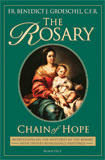 The Rosary: Chain of Hope
The Rosary: Chain of Hope
Fr. Benedict Groeschel, CFR
Fr. Groeschel presents this book of meditations on all 20
mysteries of the rosary. Drawing on his vast personal experiences as
well as the grand traditions of the Church, he takes us on a spiritual
journey that will inspire us to greater depths of prayer. Includes John
Paul II's Letter on the Rosary, and 20 lavish classic color paintings.
Regular price: $14.95, sale price: $11.96
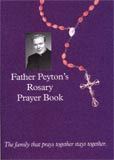 Fr. Peyton's Rosary Prayer Book
Fr. Peyton's Rosary Prayer Book
Fr. Patrick Peyton
The most complete prayer book of meditations on the mysteries of
the Rosary. Gives 230 meditations on the 20 mysteries, with each set of
five meditations having its own theme. Includes the Luminous Mysteries,
the Rosary prayers, and full-color illustrations.
Regular price: $10.95, sale price: $8.76
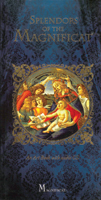 Splendors of the Magnificat
Splendors of the Magnificat
An Art Book with Audio CD
Enter into the spirit of Mary's Magnificat guided by master
artists and composers. Audio CD of 11 of the most inspiring musical
renditions of the Magnificat from the 13th to the 20th century.
Regular price: $24.95, sale price: $19.96
[image error]The Rosary The John Paul II Method
Robert Feeney
Captures JPII's vision of the Rosary as a contemplative prayer
leading to the "springtime of the human spirit". Following the method
developed by JPII, it will help you develop effective meditations while
contemplating the mysteries, and nourish a deeper spiritual life and
quest for personal holiness.
Regular price: $7.95, sale price: $6.36
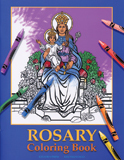 Rosary
RosaryColoring Book
Christopher J. Pelicano
A beautifully drawn coloring book featuring images corresponding to
each of the Joyful, Sorrowful, Glorious, and Luminous mysteries of the
Rosary with all the prayers and meditations.
Regular price: $4.95, sale price: $3.96
The Magnificat Rosary Companion
This beautiful Rosary booklet from Magnificat is a
complete resource for praying the Rosary. Easy to use and lush with
color illustrations, it includes meditations on all 20 mysteries of the
Rosary.
Regular price: $3.95, sale price: $3.16
Mysteries of the Rosary
A lovely devotional booklet on the 20 mysteries of the Rosary that
includes beautiful stained glass art images for each mystery, along with
in-depth meditations for all the mysteries.
Regular price: $4.95, sale price: $3.96
Films
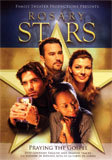 Rosary Stars
Rosary Stars
Now you can pray the Rosary with today's stars! This rich
production features celebrities and champions who share their
inspirational reflections on how they live and pray the Mysteries of the
Rosary every day. Stars include Eduardo Verástegui, Immaculée
Ilibagiza, Lourdes Benedicto, Ali Landry, Alejandro Monteverde, Matthew
Marsden, Mike Sweeney, and many more.
Regular price: $19.95, sale price: $15.96
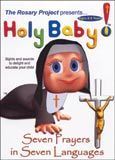 Holy Baby! The Rosary in 7 Languages
Holy Baby! The Rosary in 7 Languages
Using colorful computer-animated sights and sounds, Baby
Scholastica teaches the 7 foundational Rosary prayers in 7 languages to
young children and infants 0-5 yrs old. Acclaimed by countless parents
as a winner with their children, Holy Baby! helps your child grow in God's wisdom through playful, visual and musical meditation.
Regular price: $19.95, sale price: $15.96
Audio, Music, Note Cards
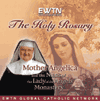 The Holy Rosary with Mother Angelica
The Holy Rosary with Mother Angelica
Join Mother Angelica and the Poor Clares as they recite the
Joyful, Sorrowful, Glorious, and Luminous Mysteries of the Rosary. Taped
at the Shrine of the Most Bless Sacrament, these Cloistered Nuns lift
their hearts and voices to Our Lord for the intentions of the world.
Regular price: $16.95, sale price: $13.56
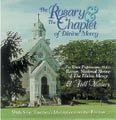 The Rosary and the Chaplet of Divine Mercy
The Rosary and the Chaplet of Divine Mercy
Recorded at the National Shrine of The Divine Mercy, the prayers
are led by Shrine Rector, Fr. Dan Papineau, M.I.C., with Vinny Flynn and
his Still Waters family ministry. The gentleness of the voices,
together with a soft instrumental music in the background, creates a
wonderful atmosphere of quiet meditative prayer.
Regular price: $15.95, sale price: $12.76
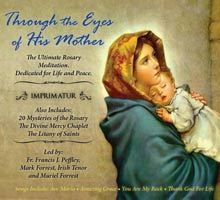 Through the Eyes of His Mother
Through the Eyes of His MotherRosary, Divine Mercy, Hymns
The complete Rosary and Divine Mercy meditation set, with Irish
tenor Mark Forrest, wife Muriel and Fr. Francis Peffley providing
beautiful meditations and vocal prayer for all 20 Rosary mysteries,
Divine Mercy Chaplet, and the Litany of the Saints.
Regular price: $16.95, sale price: $13.56
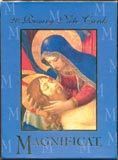
Magnificat Rosary Note Cards
Use these cards to deepen your appreciation of the rosary, and to
help you share your faith with others. They are perfect for life's
joyful and sad moments such as birthdays, anniversaries, condolences,
and commemoration of the sacraments, to name a few. 5 unique works of
art for each mystery, for a total of 20 different reproductions.
Boxed-set includes 20 blank note cards, 24 envelops all in an attractive
gold and Marian blue box!
Regular price: $24.95, sale price: $19.96
Books
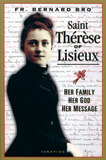 St. Thérèse of Lisieux Her Family, Her God, Her Message
St. Thérèse of Lisieux Her Family, Her God, Her Message
Fr. Bernard Bro
Fr. Bernard Bro sets forth aspects of her life, personality, and
writing that mark Thérèse of Lisieux as one of the truly great exponents
of Catholic doctrine. What she offers he claims, is "one of the most
certain and simplest evangelical shortcuts ever proposed." Illustrated.
Regular price: $16.95, sale price: $13.56
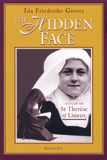 The Hidden Face
The Hidden Face
Ida Friederike Goerres
This study of the life and character of Thérèse is a penetrating
and fascinating search for the truth behind one of the most astounding
religious figures of modern times. It throws light on the purifying
process that turned the pampered darling into a saint of heroic virtue.
Regular price: $19.95, sale price: $15.96
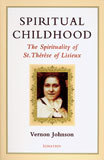 Spiritual Childhood
Spiritual Childhood
Msgr. Vernon Johnson
St. Thérèse had an un shakable trust in the love of God our Father.
Her spirituality, "The Little Way of Spiritual Child hood", is a
special gift from God for ordinary people to reach heroic sanctity.
Msgr. Johnson presents a clear, practical and profound explanation of
this "little way".
Regular price: $13.95, sale price: $11.16
Saint Therese and the Roses
Helen Walker Homan
In this Vision book, Helen Walker Homan, who writes in the
tradition of Louisa Mae Alcott, has created another classic of
delightful family life among five sisters, one of whom became a saint.
Regular price: $9.95, sale price: $7.96
Archbishop Fulton Sheen's St. Therese
Archbishop Fulton J. Sheen
Taken from the talks Sheen gave in 1973, the archbishop explains
why people from all walks of life and in every country of the world so
universally love, invoke, and imitate St. Thérèse. Illustrated.
Regular price: $19.95, sale price: $15.96
Two Sisters in the Spirit
Hans Urs von Balthasar
Balthasar's unique volume on Thérèse and Elizabeth of the Trinity
presents a theological biography of these holy Carmelite sisters which
gives profound insights into their spirituality.
Regular price: $19.95, sale price: $15.96
St. Thérèse: Doctor of the Little Way
Ed. by Br. Francis Mary, FFI
A compendium of insights from 23 writers on all aspects of the life
and spirituality of this new Doctor of the Church. Topics include: The
Little Way, the Eucharist, Abandonment through Suffering, and many more.
Illustrated.
Regular price: $11.95, sale price: $9.56
Films
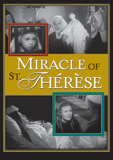 Miracle of St. Therese
Miracle of St. Therese
This is the acclaimed dramatic feature film made in France in 1960
that tells the story of the life of Therese of Lisieux from childhood
through her death as a Carmelite nun at age 24. Film critics have called
it "an excellent, reverent biopic" on St. Therese that accurately
portrays the saint's story and her unique spirituality.
Regular price: $19.95, sale price: $15.96
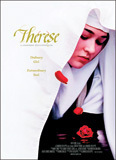 Therese
Therese
Ordinary Girl, Extraordinary Soul
This film, directed by Leonardo Defilippis, tells the story of St.
Therese of Lisieux, a young girl who fell in love with Jesus Christ and
demonstrated a path of spirituality, known as the "Little Way", through
the actions of unconditional love, human compassion, and selfless
devotion to duty.
Regular price: $19.95, sale price: $15.96
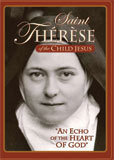 Saint Therese of the Child Jesus
Saint Therese of the Child Jesus
This definitive film, made in honor of the 100th anniversary of her
death (1897), tells the story of the life of St. Thérèse of Lisieux
from childhood to her holy death as a Carmelite nun. Filmed on location
in France it gives her whole story through interviews, dramatizations,
examination of her writings and extensive visits to her home and inside
the Carmel at Lisieux.
Regular price: $19.95, sale price: $15.96
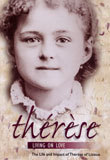 Therese: Living on Love
Therese: Living on Love
This beautiful, moving film, explores why so many ordinary people
are strongly drawn to St. Thérèse. It tells the story of her life, and
also features in-depth coverage of the amazing tour of her relics in the
USA, and interviews with journalists, scholars, Bishops, psychiatrists,
priests, nuns and scores of people from around the country that reflect
on her appeal and powerful message.
Regular price: $14.95, sale price: $11.96
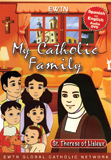 St. Therese of Lisieux
St. Therese of LisieuxMy Catholic Family
In this wonderful new animated series, Thomas and his wife Helen
help their children Alex and Sarah come to a greater understanding of
the importance of virtue by teaching them about the lives of the Saints.
The life of St. Therese and her Little Way of Spiritual Childhood are
explored.
Regular price: $14.95, sale price: $11.96
Catholic World Report
My Uncle, Fulton Sheen
By Jim Graves
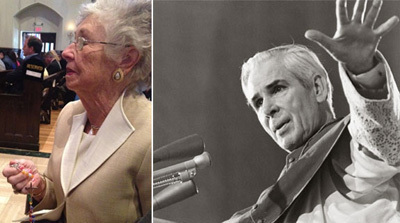
Joan Sheen Cunningham remembers life with her uncle, Archbishop Fulton
Sheen, who was the face of the American Catholic Church for decades.
Pope Benedict XVI declared Archbishop Fulton Sheen (1895-1979)
“venerable” on June 28, and the Illinois-native could soon become the
first male American-born saint. A few generations back he was the face
of the Catholic Church in America for many, employing his strong
speaking ability, personal piety and learning, and modern media to win
many converts to the Catholic faith. Someone who knew Sheen well and
hopes to live to see his beatification is his niece Joan Sheen
Cunningham of Yonkers, New York, age 85. Seventy-five years ago Joan
left her midwestern family and came to New York to attend school under
the guardianship of her uncle. She recently shared her memories of
Archbishop Sheen with Catholic World Report.
Homiletic & Pastoral Review
Avoiding Cooperation with Evil: Keeping Your Nose Clean in a Dirty World
by Dr. William Newton
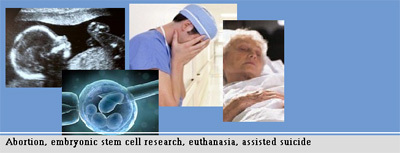
Should a Catholic nurse help care for women who are in the hospital for
an abortion? Can a Catholic taxi driver accept a passenger who asks to
be taken to a strip-club? May a Catholic postman deliver pornographic
magazines? Is it right to pay taxes when part of it is being used to
fund In Vitro Fertilization (IVF) and experimentation on embryos? These
are real questions facing upright people in the modern world. What all
the above questions have in common is that they are questions about cooperating with evil.
This is, without a doubt, one of the most important aspects of morality
for Catholics living in the modern world, and for their pastors to
understand in advising them.
40% off Roxanne Lum's "Employee Pick of the Week"

40% off Roxanne Lum's Pick of the Week*
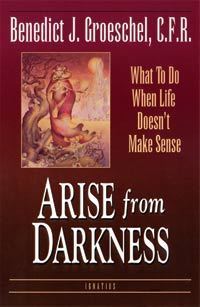 Anyone
Anyonewho has known Fr. Benedict Groeschel over his very long and fruitful
pastoral career knows he has been a wise and compassionate guide. As a
dedicated priest who is also a trained psychologist—a friend in a
special way to the poor and troubled—Fr. Benedict has guided countless
souls through some of the most difficult trials of life.
My book recommendation at this time is Fr. Benedict Groeschel’s Arise from Darkness: What to Do When Life Doesn’t Make Sense. I will let the man speak for himself…
“This book is not an answer but a guide to those in darkness. It is
about going on in spite of darkness, about survival, and about using the
unavoidable dark times of life to grow. The solution, not the answer,
that I will try to enunciate is found in the gospel and in the lives of
great saints, heroes and heroines, and in the lives of very brave
ordinary people whom we have all known. As we shall see, the Christian
response to the problem of evil and suffering began with the Cross of
Christ. In these reflections I have tried to recall some of the most
frequently encountered sorrows and griefs: the failure of friends,
financial and personal insecurity, the failure of the Church, and so on.
The consideration of each of these painful experiences offers
opportunities for us to examine them in the light of our faith in
Christ. What is more important, we will be able to learn from the
experience of others how they have learned to rise from darkness by the
strength of faith and hope.”
—Fr. Benedict Groeschel, excerpt from Arise from Darkness
Arise from Darkness is also available in an e-book and audio download
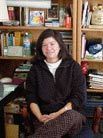 Roxanne
RoxanneMei Lum has been the Art Director of Ignatius Press for over twenty-six
years. When she’s not working, she enjoys spending time with her
friends and hiking around.
*Employee
Pick of the Week program features savings of 40% off a book, movie, or
compact disc personally chosen and recommended by an Ignatius Press
employee. Each week, an Ignatius Press employee will select a favorite
book, movie, or other Ignatius Press product and write a few sentences
about why he or she thinks customers will enjoy the particular
selection. A short bio of the selecting employee will also be included,
giving customers a chance to learn a bit more about the people who are
Ignatius Press.
Dozens injured, thousands confused by riots over "Gospel of Jesus' Wife"
By Nick Bottom of Audacious Scoffing Services:
DEVIL'S ELBOW, Missouri (ASS)— Theocratic, mean-spirited violence has erupted throughout the deep South, the "Bible Belt", the Midwest, and a smattering of towns in the Rocky Mountains as thousands of Christians have taken to the streets, wielding swords, Bibles, and plowshares, to protest the recent revelation that Jesus had at least one wife. Other protests, less violent but also widespread, took place over reports that some scholars and pulp novelists believe Jesus merely dated, but never married.
In Devil's Elbow, Missouri, a group of about two hundred men, women, and children, all blood relatives of one sort or another, dressed in their Sunday best and carrying large Bibles, stormed through the downtown, chanting, "Those who mock the Lord, will surely taste the sword; Liars say he had a wife, liars deserve to taste the knife." At least eighteen were injured from blows and bursts of righteous indignation, and two men were slain in the Spirit, although they were apparently not harmed physically.
Eyewitnesses report that the riotous Christians were singing a popular, militantly theistic song with the lyrics, "It only takes a spark, to get a fire going/and soon all those around, are warmed up by its glowing..." One bystander, Joe "Buck" Bob, said the singing was "unusually good; they have really purty voices."
Similar riots have broken out in numerous small towns. But they are also taking place in cities and other important places. Demonstrations near Harvard University, where professor Karen L. King teaches, were especially intense, in part because Christians had not been on the Harvard campus for nearly five decades, and faculty and staff were deeply confused by their clean-cut appearance and efficient methods of quoting Scripture while seeking to force victims to "do some serious soul searching". Numerous faculty members and students were shocked and traumatized by what one history professor called "the sort of theocratic-inspired violence that hasn't been witnessed since Galileo was torn to shreds by Roman Catholic popes and their mistresses in the Vatican gardens in the thirteenth century."
King, the Harvard Divinity School professor who had brought the stunning text, "The Gospel of Jesus' Wife" to public attention last week, denounced the actions as those of "crazy, right-wing, woman-hating, religious zealots who want to impose their fundamentalist, sharia law upon people of good will and Ivy League professors." Speaking from a tightly guarded ivory tower, she told some six dozen reporters that the potentially bloody demonstrations were not surprising considering the violence that had followed the publication of The Da Vinci Code, which had first brought the issue of Jesus' marital status to the attention of people who were not aware of who Jesus was or why an ordinary Jewish lad would eschew marriage in the first place.
September 26, 2012
“Christ is in Our Midst”: A Catholic visits an Orthodox Church. In China.

“Christ is in Our Midst” | Anthony E. Clark, Ph.D. | Catholic World Report
A Catholic pays a visit to a Russian Orthodox Church in Beijing.
Sunday
morning in China’s capital city is not unlike most other days: Beijing’s more
than 20 million inhabitants bustle through congested sidewalks, cars compete
almost hopelessly for space on crowded roads, and hazy grey skies loom heavily
over the city landscape, punctuated by soaring cranes marking new
constructions.
Beijing
is not exactly a city of church bells and rising spires, but nestled quietly
among the trees within the protective walls of the Russian Embassy lies the
Russian Orthodox Church of the Dormition of Most Holy Theotokos. Its humble but
majestic onion dome and Greek cross rise above the embassy walls, a sight few
could have imagined only 50 years ago, when the Orthodox church was converted
by the Soviet authorities into a garage. Three years ago the “garage” was
restored into what it was originally made for, a temple of God where the Divine
Liturgy is offered in all the rich beauty of the Russian Orthodox tradition.
The restored onion dome and Greek cross above the Russian Orthodox Church of the Dormition of Most Holy Theotokos
About
a month ago I contacted the priest rector of the church, Father Sergiy Voronin,
and the first words of his response were, “Christ is in our midst.” The
presence of Christ becomes obvious as one enters the beautiful Church of the
Dormition, with its remarkable iconostasis; 30 minutes before Liturgy the icons
are already illuminated as the faithful light candles and offer them
prayerfully while intoning the name of Holy Trinity.
Why
was I, a Roman Catholic, visiting this Orthodox church located in the Russian
embassy?
Other
than our shared brotherhood as Christians in the Apostolic Church, I came as a
pilgrim to visit the site where 222 Orthodox Christians were massacred by
Boxers in 1900, just as Catholic priests and faithful were being killed in
other parts of the city. During the Divine Liturgy, my wife and I stood near
the icon dedicated to the Orthodox martyr saints of China, and I could not help
but contemplate Tertullian’s declaration, “The blood of the martyrs is the seed
of the Church.”
Catholics
and Orthodox remain divided—God grant the grace to heal this division—but we
remain in a very real way part of the same Body of Christ. I came to the Church
of the Dormition as a pilgrim to visit the place where members of the same Body
I am part of died as witnesses to the Church of Christ founded on the Apostles.
I have visited other locations where Chinese Christians were massacred during
the Boxer Uprising, and like those places, I could see how their blood planted
seeds—though the seeds of Orthodoxy in Beijing have only recently begun to grow
again into a more visible community. The problem today is that China does not
recognize Orthodoxy as an official religion, and so only foreign-passport holders
are granted access to Orthodox Liturgy. Chinese Orthodox Christians today can
only walk by what were once grand Orthodox churches, such as those in Harbin,
Shanghai, and Wuhan, and see structures that are now either boarded up or
converted into artists’ studios, dance clubs, or exhibition halls.
"This book is a must-have" for arguing against those "who think the sexual revolution a grand thing."
From David Deavel's review of Adam and Eve After the Pill: Paradoxes of the Sexual Revolution on the Unique For a Reason—Why Marriage Matters site:
G. K. Chesterton wrote in his 1908 classic Orthodoxy, “The
unpopular parts of Christianity turn out when examined to be the very
props of the people.” The outer crust of Christian reality is a moral
sternness that seems ugly, but makes possible “pagan freedom.”
Neo-pagans wishing to excise those outer morals have brought on
themselves “despair within.”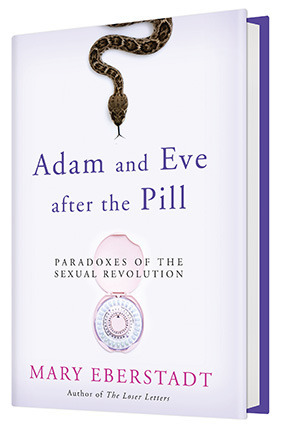
This is one of the central paradoxes of Mary Eberstadt’s new book “Adam and Eve After the Pill: Paradoxes of the Sexual Revolution.”
The sexual revolution made possible by modern, more reliable
contraception came with promises of a world that was emancipated,
free-spirited, and happy. Instead, everywhere embraced, the revolution
has brought a shrinking, aging general population, scores of abused,
abandoned, and aborted children, and unhappiness for men and—most
strikingly—for women. The despair is within, but its ugly fruits are
everywhere to be seen in anecdotal form and even in the hard data of
thoroughly secular social scientists.
What does the data say? In contrast to scholars who argued in the
Sixties that contraception would reduce abortion and child abuse,
stabilize marriages and be a barrier to poverty, Eberstadt cites the
work of Lionel
Tiger, which linked contraception to “the breakdown of families, female
impoverishment, trouble in the relationship between the sexes, and
single motherhood.” Tiger, who views all religion as “toxic,” also explicitly argues that “contraception causes abortion.”
Even Pope Paul VI did not make that last argument in his encyclical Humanae Vitae, reiterating Catholic teaching on contraception. But
he did make four specific predictions: lower moral standards in
society, more infidelity, less respect by men for women, and coercion by
governments to get people to use reproductive technologies. In all four
cases, the Church was right. ...
Eberstadt brings to this book not only a comprehensive knowledge of
social scientific research and a discerning eye for popular culture, but
a wicked sense of humor that helps one laugh a bit at the data that
would otherwise brings tears. She also brings an eye of sanity that is
surely connected to her experience as a wife and mother of four (her
husband, demographer Nicholas Eberstadt, is also a serious Catholic
scholar). This book is a must-have for those who want arguments to use
against people who think the sexual revolution a grand thing. It is also
useful to give to Catholics and other Christians who want to reject the
more outlandish aspects of the revolution but keep contraception.
Eberstadt shows it is, after all, a bitter pill. And she has the data
of social scientists—who don’t necessarily like the Church that teaches
this truth—to back her up.
Read the entire review. Also:
• The Introduction to Adam and Eve after the Pill
• Visit the website for Adam and Eve after the Pill
• "The Party's Over": A Catholic World Report interview with Mary Eberstadt
September 25, 2012
My Uncle, Fulton Sheen: An Interview with Joan Sheen Cunningham
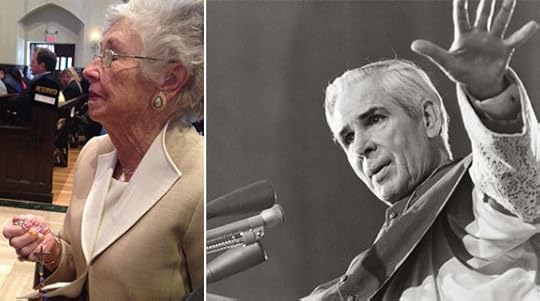
My Uncle, Fulton Sheen | Jim Graves | Catholic World Report
Joan Sheen Cunningham remembers life with her uncle, Archbishop Fulton Sheen, who was the face of the American Catholic Church for decades.
Pope Benedict XVI
declared Archbishop Fulton Sheen (1895-1979) “venerable” on June 28, and the
Illinois-native could soon become the first male American-born saint. A few
generations back he was the face of the Catholic Church in America for many, employing
his strong speaking ability, personal piety and learning, and modern media to
win many converts to the Catholic faith.
Sheen was born in
El Paso, Illinois, and grew up in nearby Peoria. He was ordained a priest for
the Diocese of Peoria in 1919, and was made auxiliary bishop for the
Archdiocese of New York in 1951 and bishop of Rochester in 1966. But Sheen is
best known for his evangelization work through the media. He hosted The Catholic Hour radio program from
1930 to 1950, and Life is Worth Living,
a television program for which he won an Emmy Award, from 1951 to 1957. He also
authored more than 70 books on theology, philosophy, spirituality, marriage,
the priesthood, and current events, and he helped convert a number of notable
personalities to the Faith.
Someone who knew
Sheen well and hopes to live to see his beatification is his niece Joan Sheen
Cunningham of Yonkers, New York, age 85. Seventy-five years ago Joan left her
midwestern family and came to New York to attend school under the guardianship
of her uncle. She recently shared her memories of Archbishop Sheen with Catholic World Report.
CWR: What
was your relationship to Archbishop Fulton Sheen?
Joan Sheen Cunningham: My father, Joseph Sheen
(1899-1956), was the younger brother of Fulton Sheen. There were four Sheen
brothers; Fulton was the oldest, and my father the second oldest. The two other
brothers were Thomas and Al. My father was the closest to Fulton.
I was born into a
family of eight in Peoria, Illinois. My father was a lawyer. When I was age 10,
he sent me to New York to go to school, under the care of my uncle, Fulton
Sheen. He was like a second father to me.
CWR: So,
you were close to him?
Continue reading at www.CatholicWorldReport.com.
On Cultivating the Mind that is Catholic
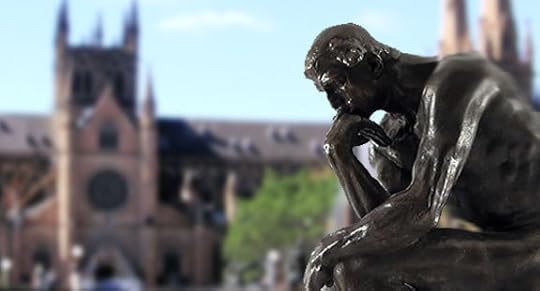
On Cultivating the Mind that is Catholic | Brian Jones | Catholic World Report
For Catholics, the intellectual life is not something reserved for the academic elite.
Reading blogs is
not typically something I care to tread into. More often than not, it seems
that blogs have become merely an outlet for those who neither want nor seek
genuine and fruitful intellectual discussion. This is, of course, not a denial
that good blogs exist, or an assertion that good ones ought not to exist, but a
simple observation that blogs have enabled anyone to say practically anything
without having to provide a reasonable and coherent defense for those positions.
While recently reading an article that analyzed St. Thomas Aquinas’ conception
of the relationship between science and faith, I stumbled across the following
comment from one anonymous blogger:
Religion deals with fiction, or at the very best supernatural
stuff that cannot be disproved but is still implausible. Science is about making statements that can be made with certainty.
There is no overlap between religion and science. Religious public relations
people try to say that there is, but in reality, religion has no relation to
science at all. Religion is about
believing in stuff without evidence.
In reading these
sentences, I couldn’t help but recall the Catholic novelist, Walker Percy, who
once provided the following astute insight regarding this philosophic view of
reality: “This life is much too much trouble, far too strange,
to arrive at the end of it and then be asked what you make of it and have to
answer, ‘Scientific humanism.’ That won’t do. A poor show” (Conversations with Walker Percy, “Questions
They Didn’t Ask Me,” 417).
Dr. Michael Tkacz, philosophy professor at Gonzaga University, has often
drawn attention to the fact that our contemporary culture understands religion
to be merely “private, nonrational, and unverifiable,” whereas science is
“public, rational, and verifiable.” Science deals with objective, empirical
facts about reality and religion provides the ethical tools and resources of
how to live with this reality. However, from this perspective, it is important
to remember that these two spheres of life cannot and do not overlap since they
pertain to two distinct and separate orders of reality. Tkacz has also
highlighted that this intellectual dualism is not only fostered in secular
culture and universities, but in our Catholic universities and institutions of
learning and formation as well. Pope John Paul II’s apostolic constitution Ex Cordae Ecclesiae has provided an in-depth
elucidation of what a university ought to be, most especially a Catholic
university. Anyone familiar with this document, and the status of Catholic
higher education in this country, cannot deny how far off course we have gone,
by desperately striving to become homogenous with the Ivy League schools, those
so-called “peer institutions.”
Catholic culture has unjustly inherited from her institutions of higher
learning a dismantling of the integral relationship between faith, science,
reason, and the necessity of cultivating a genuine intellectual life, what Father
James V. Schall has rightly labeled “the Catholic mind.”
September 24, 2012
Questions and Answers
by Fr. James V. Schall, S.J. | Catholic World Report
The essence of modernity
stems from Machiavelli, Hobbes, and Bacon. Its project is to build man’s estate
on the basis of “rights” that he himself defines. No transcendent order can be
located. The City of God and the City of Man are not separate. Only the city of
man’s own making “exists.” Man has no transcendent end, nor any information
about himself except what he wills to acknowledge. Revelation, even if it were
possible, must be ignored because its origin is not in man.
Man knows himself to
exist and to exist as the kind of being he is. Why he is this kind of a being,
however, is not something that he himself has formulated. Nor did he cause
himself to exist, to come to be out of nothingness. The human condition is
complicated by the fact that man knows this condition. His self-reflection
cannot but leave him with wonderment about why he is at all, about why he is
not something else.
Evidently, things other
than himself exist and pose the same questions to man’s curiosity. Why does
something besides one’s-self exist? Likewise, many things that might exist do
not. A world of “imagined” or “possible” beings might have come about. While it
is not particularly fruitful to worry about the so-called “might-have-beens,” the
fact that we can pose the questions concerning them still causes us to wonder about
the exact nature of things that do and do not exist.
Moreover, we never find “existence”
itself confronting us, only existing things. What we find are things limited to
be this or that kind of existing being. Our minds seem to be such that we can
know all that is. The Latin expression
that mind is “capax omnium,”
capable of all things, seems accurate. At first sight, this capacity is perplexing.
It incites us to pose a series of “why’s,” almost as if this posing was what
this power is for.
However, we do not ask merely
the “why?” of something. We ask both: “Why is it this way and not that way?”
and “Why is it at all?”
E Pluribus Unum: The Church’s Role
Where
is that Church where “there does not exist among you Jew or Greek,
slave or freeman, male or female. All are one in Christ Jesus”
(Galatians 3:28). Where are those churches where the congregations are
not divided by ethnicity or language?
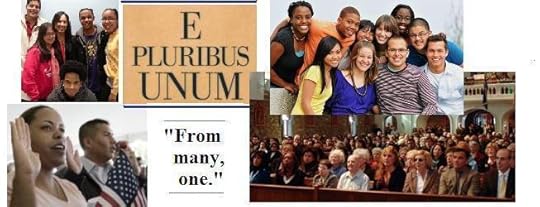
While meeting with the young people of the parish, I suggested that
the Hispanic youth join with the other youth of the parish to form one
youth group. I noted that the last speaker to the Hispanic youth group
had made his presentation in English, and I recalled that when I did a
bilingual Mass, the Hispanic servers would chat among themselves before
Mass in English. All youth of the parish were classmates at the same
high school. Why separate them into two parish youth groups?
The Hispanics rejected my suggestion, the non-Hispanics were okay with the idea, and the African-Americans were very supportive.
Of course, I thought. The civil rights’ and feminists’ efforts in
the past decades have moved this country away from institutionalized
separation due to sex or race. The support of the African-American
youth of the parish for combining all the young people as one group was
the logical statement from kids that had experienced separation and
discrimination. Non-Hispanic youth had grown up with multi-racial
classmates, and saw no need for a separation of youth in the parish.
The Separation Norm
Separation by ethnic or language groups has become the norm in
our Roman Catholic Church in the United States. The Archdiocese of Los
Angeles has Masses in more than two dozen languages (as listed on their
website). Bishops and seminaries across the country encourage study of
Spanish, varying from encouraging, to requiring, an ability to
administer the sacraments in Spanish.
National politics adheres to the same separation norm. Congressional
electoral districts have been gerrymandered until some looked like
Rorschach ink blots in order to ensure African-American voters were
properly represented. Now, based on the 2010 census, Hispanics seek
redistricting to ensure their representation, as well.
The propensity toward separation in American society grows stronger.
Where I grew up, we had considerable numbers of persons of Italian and
Polish family backgrounds, whose parents, or grandparents, had come to
this country to work in the coal mines, or in the steel mills. I never
recall anyone being identified as Italian-American or Polish-American,
we were all just neighbors. Today, we have African-Americans,
Hispanics, Polish-Americans, Vietnamese-Americans, and so forth. The
columnist, Leonard Pitts, points out that we are quicker to define
ourselves in tribal terms, than national ones. We are African-American
women. We are Jews. We are Southerners. We are conservatives. We are
Mexican immigrants, etc.
The Perils of Separation
Professor Samuel P. Huntington, of Harvard University,
describes a “cleft” country as a country with deep cultural differences,
between sizable groups. Group identity starts to trump national
identity. Breakup of the country may follow, as it did when the former
Yugoslavia divided into six republics. News reports tell us of the
separatist movement in the Province of Quebec in Canada, or the tensions
with the Basques in Spain. By contrast, Huntington calls cultural
assimilation of different groups in the United States into one society
as being possibly the greatest American success story.
September 22, 2012
By embracing Christ's Passion, we overcome our passions
A Scriptural Reflection on the Readings for Sunday, September 23, 2012 | Carl E. Olson
Readings:
• Wis 2:12, 17-20
• Ps 54:3-4, 5, 6 and 8
• Jas 3:16-4:3
• Mk 9:30-37
Three of the greatest temptations known to man are lust for power, pursuit of illicit pleasure, and envious grasping for possessions. These three flow, in various ways, from the capital sins: pride, avarice, envy, wrath, lust, gluttony, and sloth or acedia (CCC 1866). All three, it is important to note, are perversions of authentic and good gifts from God: proper dominion and authority, the wholesome enjoyment of material things, and the joy of right relationships.
These temptations are the subjects of the discourses proclaimed in the Gospel readings over the next four weeks (Mk. 9:30-10:31). The first part of today’s Gospel marks an important transition, which is both physical and pedagogical in nature. First, Jesus and the disciples began to journey through Galilee toward Jerusalem. Secondly, Jesus was not preaching to the crowds that had swarmed after him, but was giving private instructions to his disciples.
Finally, once again, as he had done a bit earlier (Mk. 8:31), Jesus spoke of his approaching Passion: “The Son of Man is to be handed over to men and they will kill him…” He would return again to this prophetic message (Mk. 10:32-4), creating a sort of frame around the discourses in-between. This structure was not accidental, for there is a significant relationship—one of conflict and opposition—between the Passion and the temptations to power, pleasure, and possessions.
Put another way, the Passion is the antidote to human passions. Jesus Christ, fully human, freely chose to be handed over to certain death. In doing so, he decisively rejected the pull and allure of power, pleasure, and possessions. Yet he also had to teach his disciples the same, which was no small task considering their frail natures and their imperfect understanding of his mission: “But they did not understand the saying”—that is, his foretelling of his and resurrection—“and they were afraid to question him.” As is so often the case, fear is the acid that eats away at the flesh of faith.
The subject of the argument Jesus asked the disciples about at the home of Peter and Andrew in Capernaum (cf. Mk. 1:29) is the same subject that has sparked countless arguments, heresies, and schisms over two thousand years of Church history. Who is the greatest? Who will have the most power? Who is in charge? Jesus’ answer was not, of course, merely talk, for he would walk the talk when he willingly took up the Cross and accepted death.
The tree he would be nailed upon was one rooted in perfect humility. “Observe a tree,” wrote Augustine, “how it first tends downward, that it may then shoot upwards. It fastens its root low in the ground that it may send forth its top toward heaven. Is it not from humility that it endeavors to rise? But without humility it will not attain to higher things.” Christ is the personification of the wisdom from above, described by James in today’s Epistle as pure, peaceable, and full of good fruits. He is the fulfillment of the son of God described in the Book of Wisdom, delivered to his foes and condemned to a shameful death. He had no need to attain heaven, which was his home, but planted roots on earth so we might attain heaven by the tree of his crucifixion.
The Son of God, explained Paul in his great Christological hymn in Philippians 2, became a man—a servant—“and being found in human form he humbled himself and became obedient unto death, even death on a cross” (Phil. 2:8). When Jesus referred to the child in the midst of the disciples, he was making a clear connection (lost in the English translation) between “child” and “servant,” which come from the same root word in Aramaic and Greek.
Divine sonship is rooted in humble servanthood. The divine irony is that becoming a child of God is the only means to becoming truly mature and fully human. And by embracing the Passion, we overcome our passions.
(This "Opening the Word" column originally appeared in the September 20, 2009, issue of Our Sunday Visitor newspaper.)
Carl E. Olson's Blog
- Carl E. Olson's profile
- 20 followers



